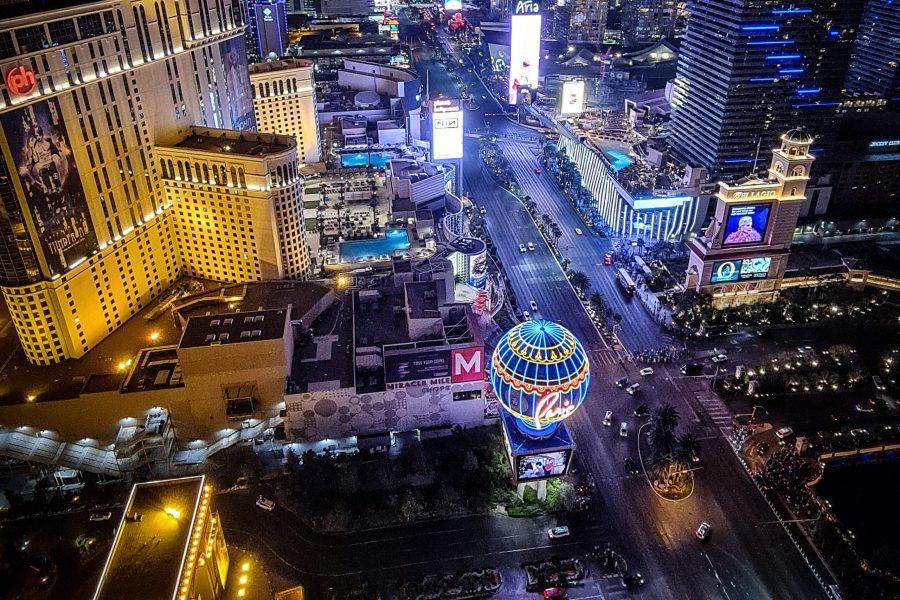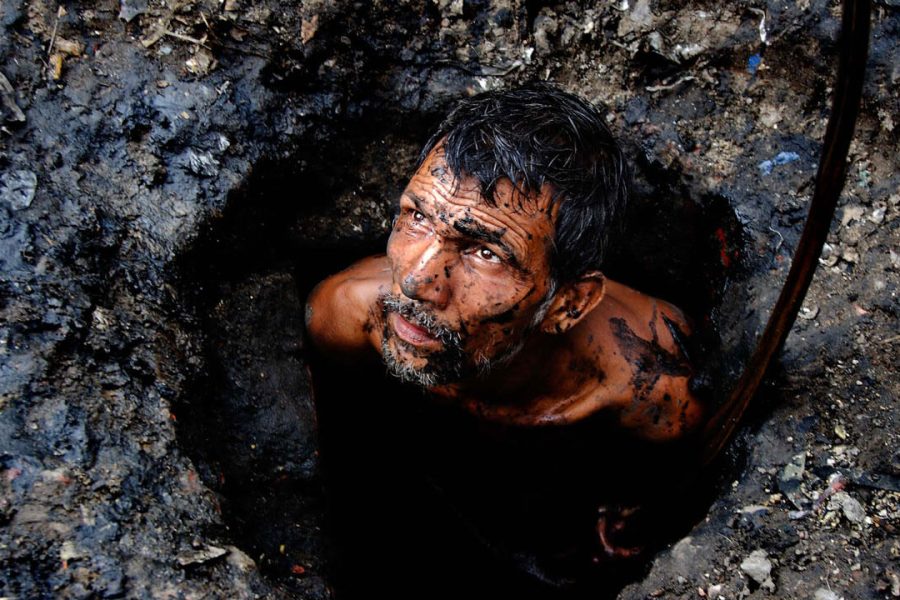1. UTIGORD WATERFALL, NORWAY
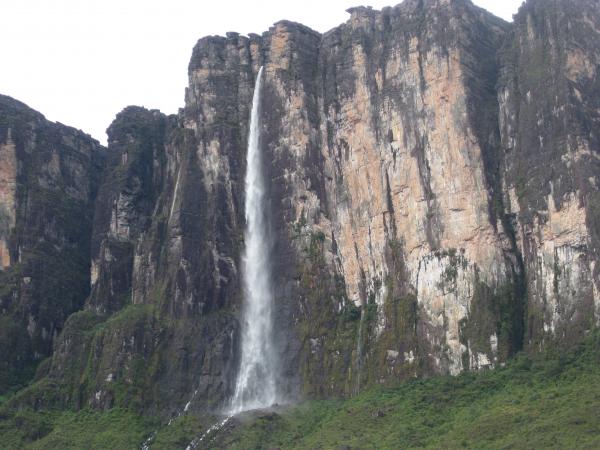
Norway is distinguished by the presence of the highest waterfalls. The reason for their formation is the melting of glaciers in high mountain areas. The highest waterfalls in Europe are located here. Despite the disputes of scientists about the exact height, eight of them are among the twenty highest. Utigårda Waterfalls (or Ramnefillet) is the most beautiful cascade waterfall. According to rough estimates, the height is 800 meters. You can get to it by helicopter or on foot.
2. MONGE WATERFALL, NORWAY

Monge Falls – also known as Mongefossen. One of the highest waterfalls in the world, with a height of about 773 meters and a width of 84 meters. Like many waterfalls in Norway, Mongefossen is used to generate energy through hydroelectric power. It is located in the municipality of Rauma in Norway, near the Rama River and the European route E136. Mongefossen’s trump card in the fight against other waterfalls is the nearby Røuma railway line. And anyone can take advantage of this advantage: you just need to get off at the platform of the train station, where you will see an unforgettable view of the “Monge Falls”.
3. TUGELA FALLS, SOUTH AFRICA

The most amazing and extreme Tugela Falls is rightfully considered the largest waterfall created by nature without human intervention. The height of this creation is about 947 meters. A stream of water no more than 15 meters wide falls down a mountain cascade, the height of one of the steps is 411 meters. This waterfall is located among the Drakensberg Mountains in the National Park of Africa. In order to get to it, you will have to spend a whole day on foot along the most diverse terrain. Sometimes it is just a path among the mountains, and sometimes you will have to go down steep cliffs. It is lucky that the locals have built metal stairs in especially dangerous areas. So the day will pass among the most unique landscape.
4. ANGEL FALLS, VENEZUELA
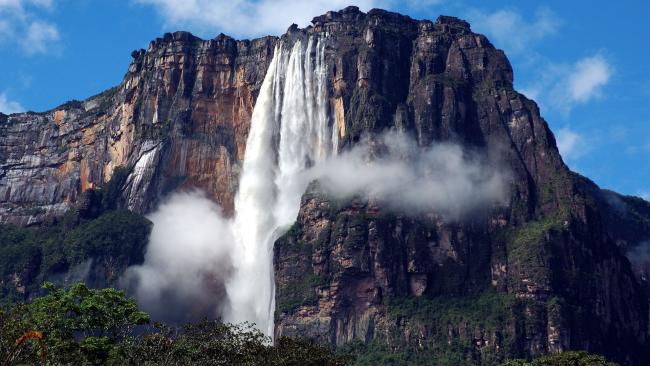
In the world, Angel Falls ranks as the highest free-falling waterfall. It is located in the mountains of Venezuela on the Carrao River. Translated from Spanish, the name of the waterfall is translated as "Angel" and is named after a pilot who flew there in the 30s with an expedition in search of minerals, but crashed. Together with colleagues and his wife, he had to travel 11 days to the nearest settlement. There they were met by heroes, the waterfall was named in his honor, and the helicopter was eventually released, repaired and installed as a monument. The height of Angel Falls is 979 meters, the height of the continuous fall is 807 meters. It is a UNESCO World Heritage Site. Modern traveler Alexander Klenov:
It remains a mystery where the waterfall is fed from. There is no lake, no river, nothing at the top. Only strange vegetation, unseen animals, fog and silence... The place is enchanted.
It is impossible to reach the waterfall on foot, as it is surrounded by impenetrable tropical forest. Tourists can observe this beautiful creation of nature only from private planes, which are rented in the village of Canaimi. Another way is by water in a motorized canoe. Also, for extreme sports lovers, they offer to jump from the plateau on a hang glider.
5. VICTORIA FALLS, ZIMBABWE
 Victoria Falls forms the largest sheet of falling water in the world. Victoria is the only waterfall in the world that is more than 100 meters high and more than a kilometer wide. The most touristic point is located on the border between Zambia and Zimbabwe. Victoria Falls is one of the main attractions of South Africa, belongs to the UNESCO World Heritage. It is located on the border of two national parks - "Thundering Smoke" ("Mosi-oa-Tunya") in Zambia and "Victoria Falls" in Zimbabwe.
Victoria Falls forms the largest sheet of falling water in the world. Victoria is the only waterfall in the world that is more than 100 meters high and more than a kilometer wide. The most touristic point is located on the border between Zambia and Zimbabwe. Victoria Falls is one of the main attractions of South Africa, belongs to the UNESCO World Heritage. It is located on the border of two national parks - "Thundering Smoke" ("Mosi-oa-Tunya") in Zambia and "Victoria Falls" in Zimbabwe.
"The whole mass of water pouring over the edge of the waterfall, three meters below, is transformed," as David Livingstone wrote, "into a kind of monstrous curtain of snow driven by a blizzard. The water particles are separated from it in the form of comets with streaming tails, until this entire snow avalanche turns into myriads of small comets rushing in one direction, and each of them leaves behind its nucleus a tail of white foam."
6. IGUAZU FALLS, ARGENTINA
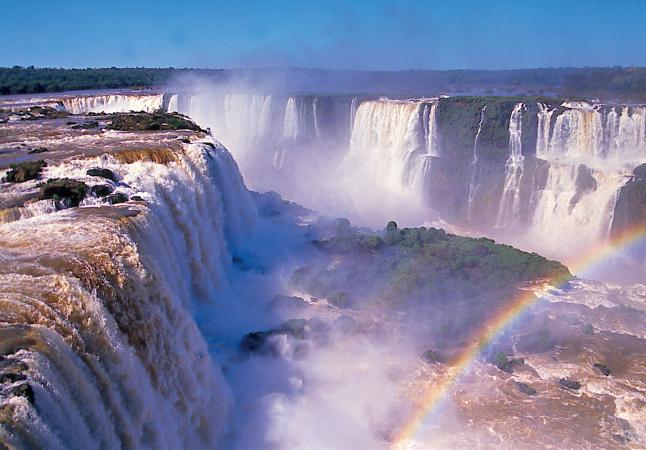
On the border of Brazil and Argentina is located the amazing Iguazu Falls, 85 meters high. The complex, which has a crescent shape, consists of many waterfalls, the number of which, depending on the season and water pressure, can reach 275. This is a wonderful and very beautiful tourist destination, which forms a horseshoe and extends for 880 meters. At the world competition, Iguazu received the title of one of the seven natural wonders of the world.
It is better to allocate a separate day to visit the Iguazu National Park. And the next day, visit the waterfalls. The view from the Brazilian side is the most breathtaking, from here you can observe the entire panorama of the waterfall, order a helicopter tour, or sail on boats. For tourists, special viewing platforms are equipped here, car and walking routes are laid, dozens of campsites and hotels have been built. Most of the waterfalls are located on the territory of Argentina, but from the Brazilian side there is a wonderful view of the largest waterfall of the complex - "The Throat of the Devil".
7. KAIETEURE FALLS, GUYANA
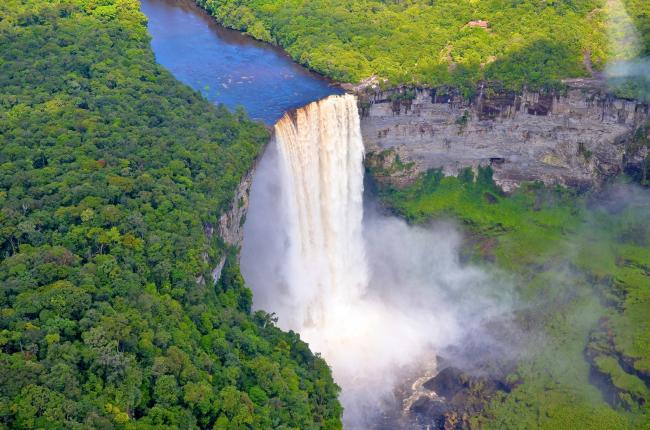
Kaieteur Falls is the hallmark of Guyana. Its approximate height is 226 m, followed by numerous steep cascades. It is about 5 times higher than Niagara Falls and 2 times higher than Victoria Falls. It is known for its beauty, charm and magnificent atmosphere, but also for its inaccessibility. Untouched nature, vast tropical forests, an abundance of rivers and waterfalls
To visit the waterfall, you can take a plane from Georgetown or walk. Not every traveler can go on foot on a two-day journey. But this is a wonderful opportunity to get to know virgin nature up close.
8. NIAGARA FALLS, USA/CANADA

Niagara Falls is the most powerful in North America in terms of the volume of water it passes. Due to this, it has become not only a tourist attraction, but also the main object of the economy of New York. It is located on the border of the United States and Canada. The height of Niagara Falls in the American part is 51 meters, and the height of the free fall is only 20 meters due to the large number of rocks. The width of the waterfall is 330 meters. The height of Niagara Falls in the Canadian part is 49 meters. Niagara Falls, where the border of two Great Lakes (Erie and Ontario) is located, actually consists of three separate waterfalls - American, Bridal Veil Falls and Horseshoe Falls, which is often called Canadian because it is located on the territory of this country. The Canadian and American Falls are separated by Goat Island with viewing platforms, alleys, souvenir shops and a monument to Nikola Tesla. The third, smallest waterfall is Bridal Veil Falls. It is quite narrow and separated from the American one by a small island called Silver Island. A beautiful Rainbow Bridge, built in 1941 and connecting Canada and the USA, spans the gorge through which the waters of Niagara flow.
It is believed that in ten thousand years the falls have risen about eleven kilometers upstream, and this movement continues today at a rate of about thirty centimeters per year. Scientists estimate that in about fifty thousand years the cliff will reach Lake Erie and Niagara Falls will cease to exist.
For tourists, there is a cable car, viewing platforms and towers, paths and galleries for pedestrians, helicopter tours and even a hot air balloon. In the summer, after dark and until midnight, the waterfalls are illuminated with colored spotlights.
9. "GOLDEN WATERFALL", ICELAND

Gullfoss Waterfall is one of the most beautiful, full-flowing and large waterfalls in Iceland, as well as one of the fullest waterfalls in Europe. The river from which the "golden" waterfall takes its water flows out of the second largest glacier in Iceland. Depending on the composition of the ice cover, the river water changes its color. The waterfall has a bend at a right angle, and the height of the first stage is about 11 meters, the second - 22 meters of free fall of water. This is a beautiful and attractive place to see both in summer and winter.
Why the waterfall was called golden is not exactly known, there is a fairy tale version of the origin of the name. I remember that in Irish folklore there is a mythical character - a leprechaun, who hides a pot of gold in the place where the rainbow touches the ground. And since the rainbow is an integral part of the waterfall, then perhaps the Icelanders borrowed the fairy tale hero and his gold from the Irish. Although this version does not claim to be official, it is more interesting for tourists.
From the capital of the country, to the waterfall, there is a good road with asphalt covering, along which excursion buses with tourists travel daily, as well as independent travelers in personal or rented cars. Public transport does not go along this route.
10. Plitvice Falls, Croatia
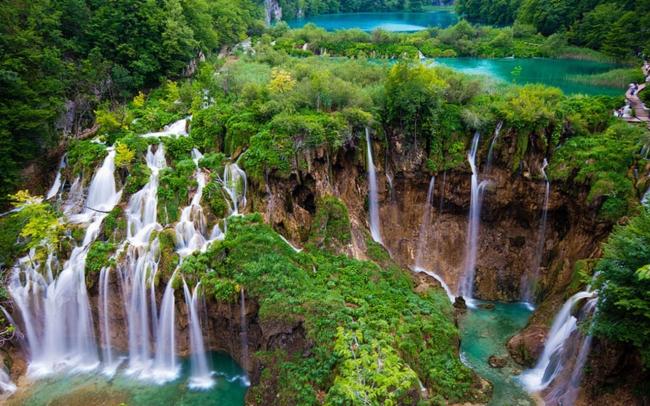
Plitvice Waterfalls are located in Plitvice Lakes National Park, Croatia. All its beauty is concentrated in 16 lakes, connected by waterfalls and straits. The national park covers an area of 300 km², and the lakes themselves are more than 8 km long. One of the most amazing waterfalls in the world, it is known for its stunning cascades. The color of the water varies from one cascade to another, adding great importance to their beauty and attractiveness. Each lake flows into the next, forming a cascading system of waterfalls.
One of the first scientific researchers of the Plitvice Lakes was academician Ivo Pevalek. He once said: "Rivers, waterfalls, lakes and forests exist in other places too. But the Plitvice Lakes are unique. And they definitely need to be seen."
Every year new waterfalls are born in Plitvice, as if these lakes were alive. Scientists were intrigued by this phenomenon and decided to find out the reason. It turned out that the waters are very rich in dissolved limestone, and such an environment is an ideal place for calciphiles to live. Calciphiles are plants that need calcium to live. After their death, hard deposits are formed, from which, in turn, dams gradually grow. Sooner or later, the river finds a weak spot in the barrier and the waterfall breaks free.
The best way to get to Plitvice Lakes is by car, your own or rented. 105 kilometers southwest of Zagreb and 10 kilometers south of the village of Grabovac. Travel time to the national park from the coastal areas is on average three to four hours, depending on the distance to a particular resort.








